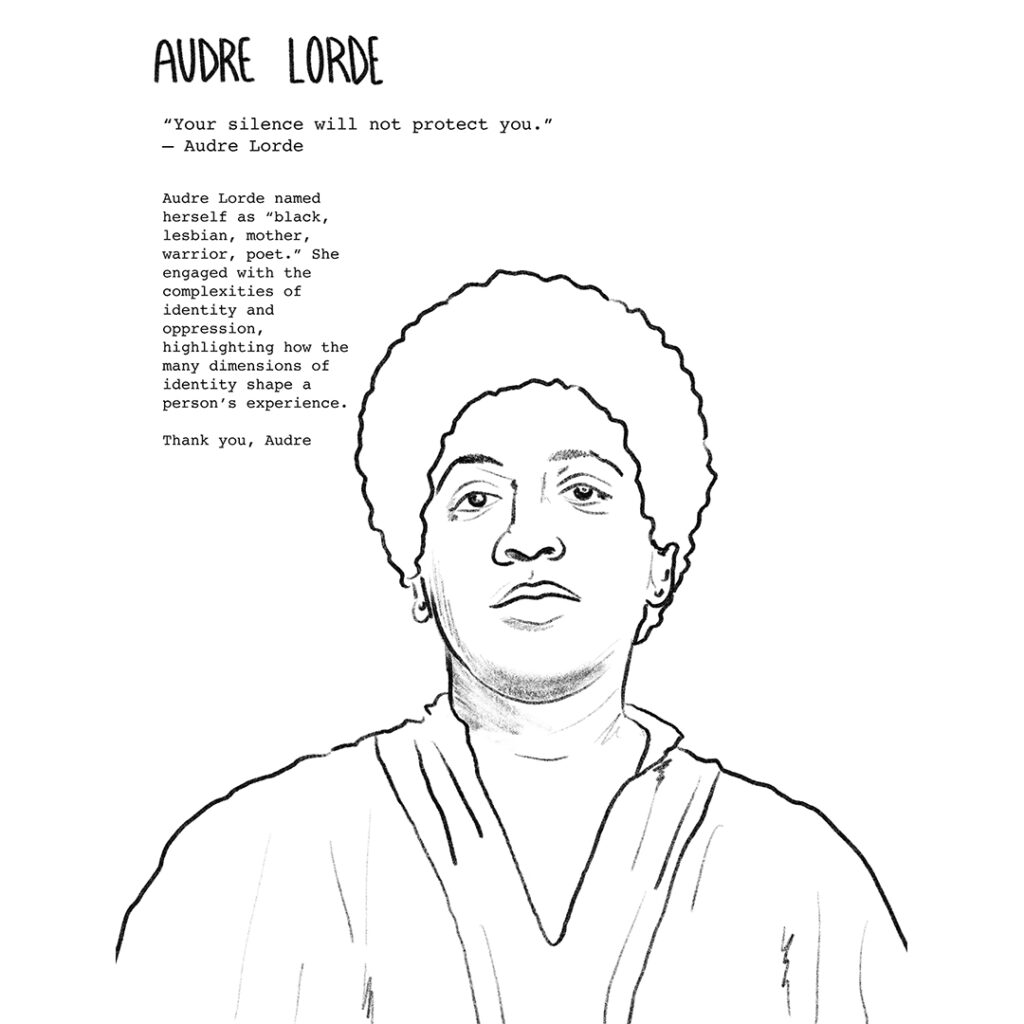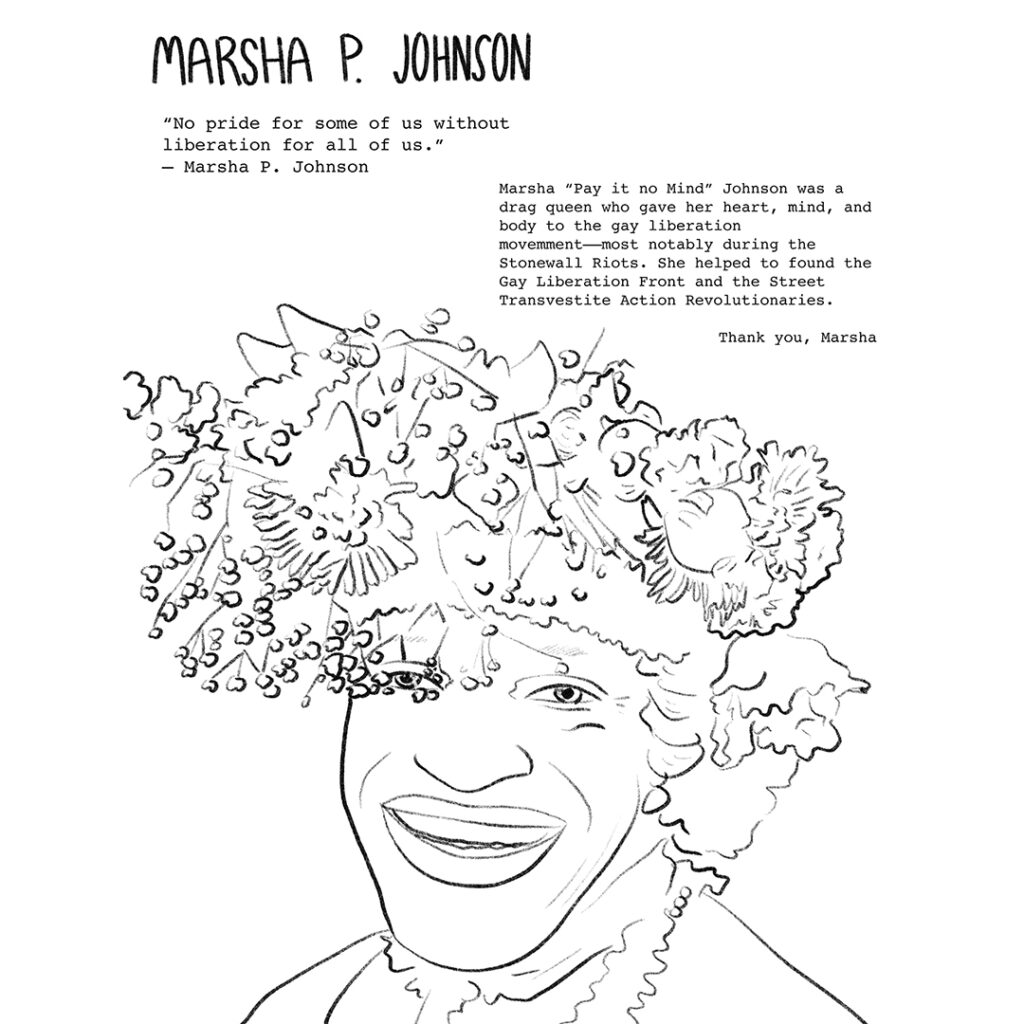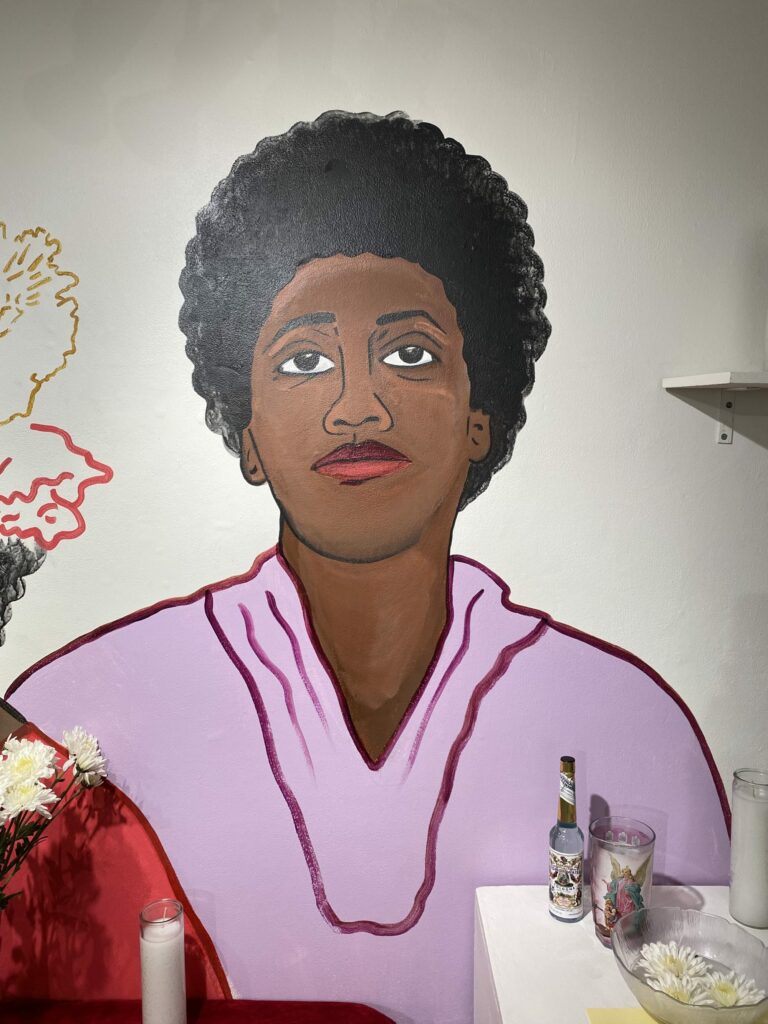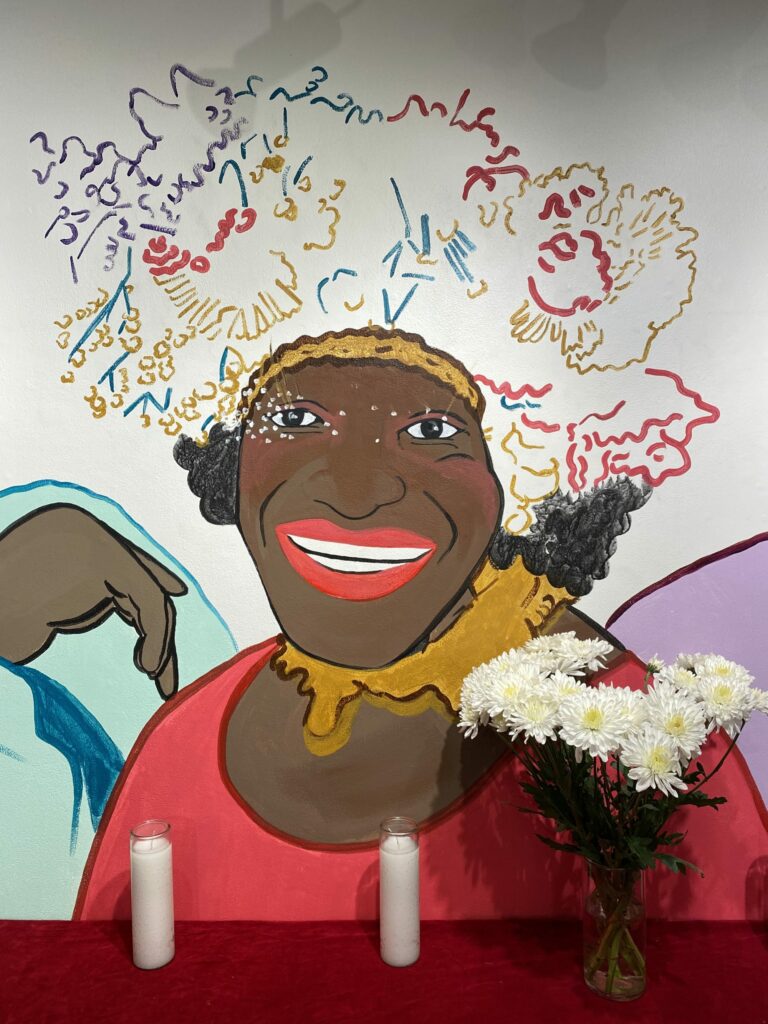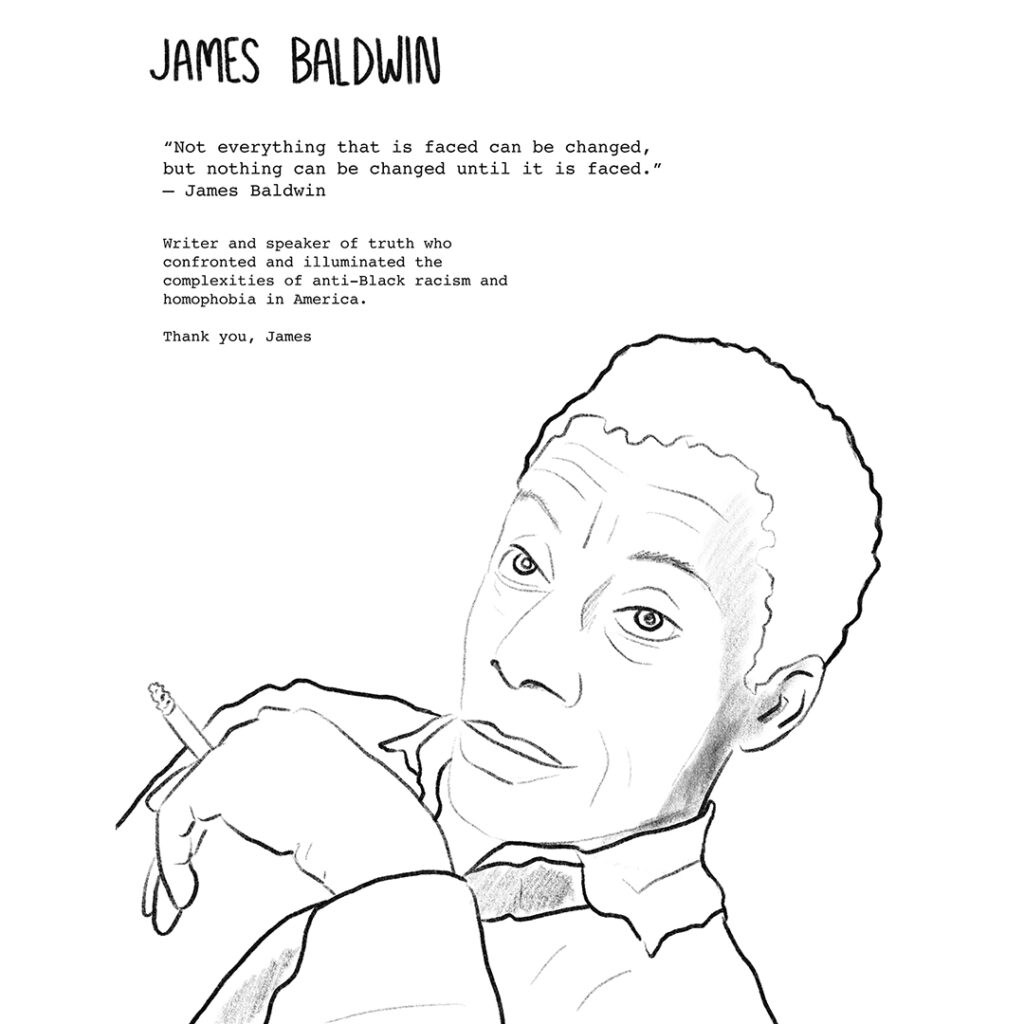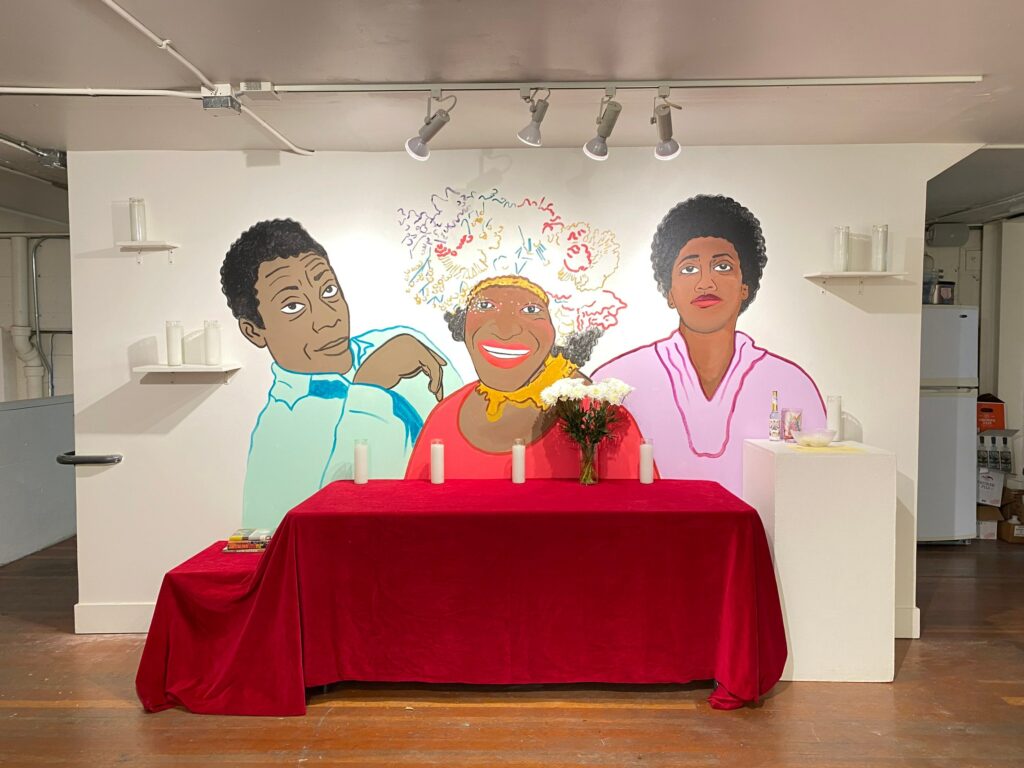
Megan Leppla’s practice is rooted in community engagement, self-reflection, and remembrance. Through her roles as artist and educator she melds the two together manifesting it into a rich and varied practice embodied through installation, illustration and works on paper. Many of which operate as open invitationals for outside interventions and participations. Leppla’s artistic inclinations and curiosities are influenced by her intersectional identity of being a queer bi-racial latinx femme. There is an ever-present aura of collective care, empathy and intention radiating from her work. This November, Leppla has channeled these elements into a large scale mural entitled Black Queer Leaders Veneration adapted from a previous project she began in May of 2020.
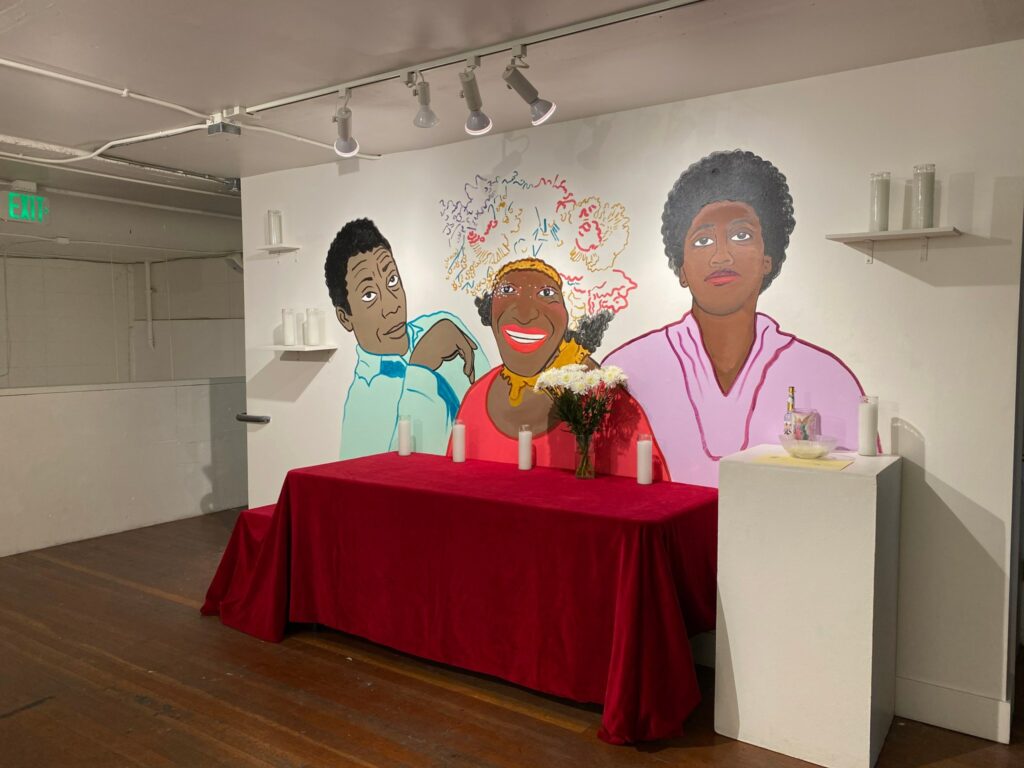
Chanell Stone (Exhibitions Fellow): Can you tell me more about your intersectional art practice, navigating as an artist and educator?
Megan Leppla (Studio Artist): As an artist and educator I find the two roles often influencing one another. My students constantly inspire me to stay curious. I feel it is important to bring contemporary art-practices into my teaching—whether that’s through sharing my own artwork or the artwork of others exploring issues in the world today—because it makes the work feel more relevant for my students. Beyond that, I notice myself often taking on a kind of facilitator role in my art-making, inviting the viewer to be an active participant. I guess a through line for both my teaching art practice is community.
CS: How did you arrive at illustration and is this your preferred medium?
ML: Photography was my gateway to art, but I struggled to keep up with the technology around it. I moved to drawing as a way of storytelling, borrowing strategies from the documentary style photography I loved. Now I enjoy using drawing as a way of slowing down and making close observations. I love drawing portraits because, in a simple way, it feels like an honoring of that person.
CS: What inspired you to create The Black Queer Leaders Project now adapted into an exhibition and public veneration?
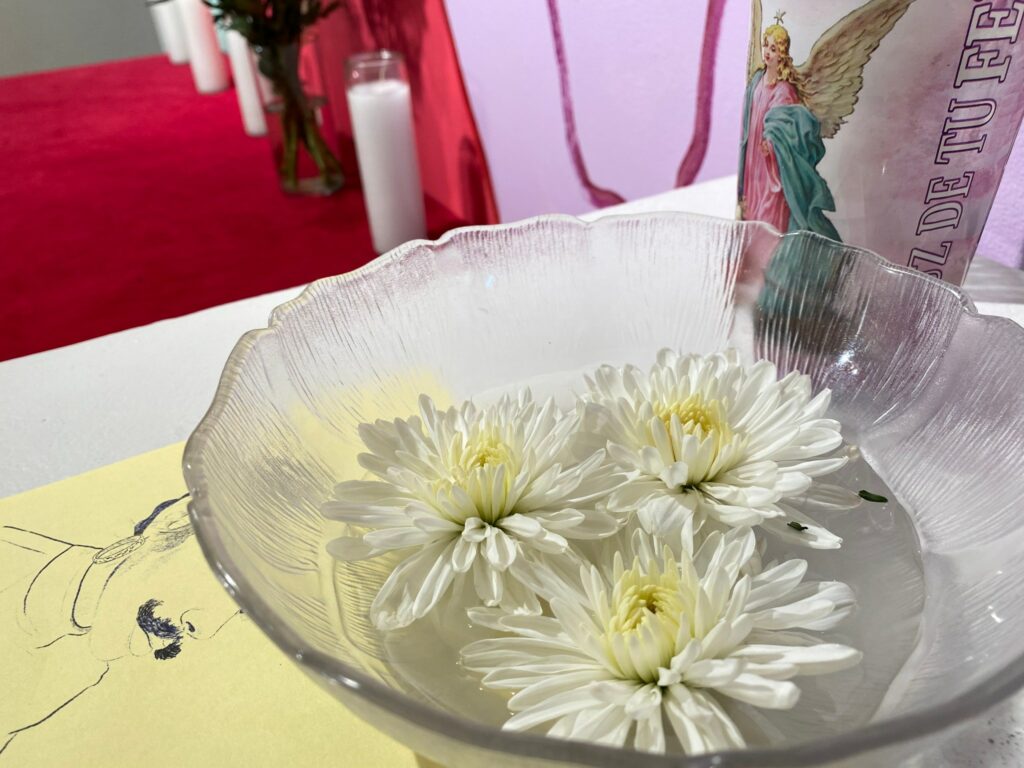
ML: We started this project in May 2020—in the midst of a pandemic, in preparation for Pride month, and just before the resurgence of uprisings took place across the world in defense of Black lives. My girlfriend and I are both educators. So often we notice the Black narrative in schools focuses on deficit, and we wanted to instead move towards stories of love. She started researching and writing stories about Black queer leaders who pave the way towards liberation for so many of us in the LGBTQ community, and I began creating illustrations to pair with those stories. The coloring pages became a beautiful resource to share with our students, as well as other educators. We consider this an ongoing project of gratitude. Now as an exhibition and public veneration, I hope to invite others to celebrate those they feel in lineage with. Growing up catholic and a closeted queer, I’m interested in this reappropriation of religious language and iconography in a way of celebrating to aspects of my identity I was taught to repress. I invite others to consider who paves the way towards liberation for them, and how they might participate in this celebration.
CS: What are you hoping folks gather from the Black Queer Leaders Veneration?
ML: I hope the Black Queer Leaders Veneration honors those who pave the way towards liberation for all of us. Marsha P. Johnson put it best when she said: “No pride for some of us without liberation for all of us.” This project began with the three central figures in the installation—James Baldwin, Marsha P. Johnson, and Audre Lorde. Their portraits are central to the overall project as a reminder that we all benefit from their efforts. I hope others feel encouraged to share who the feel in lineage with and who they want to honor. I hope that folks can see this as a reconciliation for those chosen ancestors.
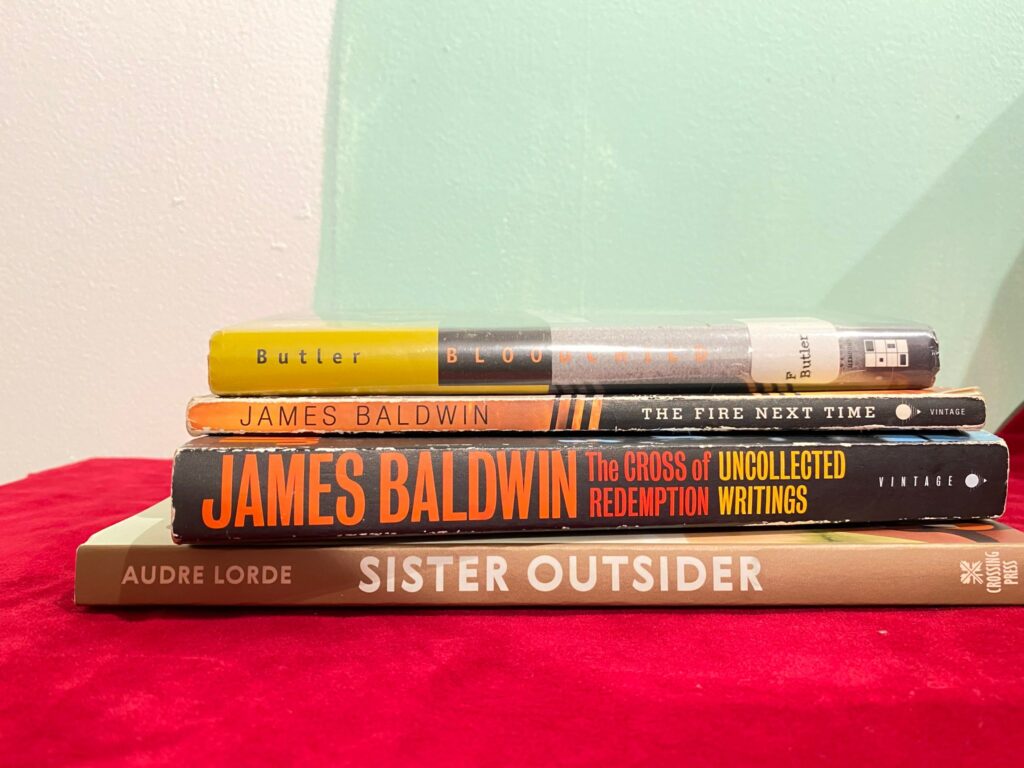
CS: What is the nuance of creating a living memorial that embraces both past and present histories?
ML: Sometimes it feels as if queer liberation is non-linear. There were folks like Marsha P. Johnson who started a revolution in 1969, and there are the queer youth today who keep pushing elders to be more inclusive. I feel it is important to honor all of that. Creating a living memorial reminds us that we play an active role in the liberation of all people, and it invites us to consider the shoulders we stand on as we continue to do this work.
CS: Your practice often incorporates a communal aspect to it embracing collective community engagement. Can you elaborate more on that and why this is of importance to you?
ML: As a bi-racial, queer, latinx femme I catch myself code-switching a lot. There is inherent privilege in that, and a deep longing for community. Growing up I was taught to assimilate, that there was safety in sameness. Over time I’ve learned the importance of speaking out, and that there is strength in community when you do. I use my art to send up a flare to those who may need it too.
CS: How has this year influenced your practice? Are there any new projects underway?
ML: This year has influenced my practice tremendously. Prior to the pandemic I was making work in community, inviting others to participate in the work with me. Now I’m finding it hard to maintain that sense of community, and I’m often looking inward more. I’ve been working on this ongoing series, Figure Studies, which serves as a dialogue in continued conversation with the body. I’m curious how this time of social distancing is impacting our abilities to be in community and show up for one another, how we’re holding the memories of this in our bodies, and what that looks like.
Megan Leppla’s solo exhibition Black Queer Leaders Veneration is on view online and in person by appointment in the Frank-Ratchye Studio Artist Project Space at Root Division from November 6th to November 30th.

